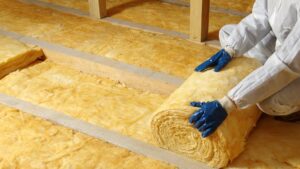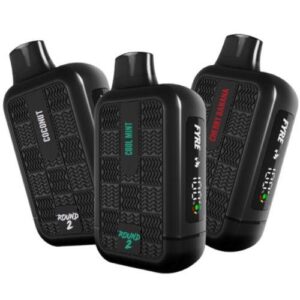Flush bottom valves play a crucial role in industrial processes, providing a means to discharge solids, liquids, or slurries from the bottom of tanks or vessels. These valves are designed for various applications, including the chemical, pharmaceutical, and food industries. However, to ensure their performance and longevity, manufacturers have introduced PTFE (Polytetrafluoroethylene) linings in flush bottom valves. In this blog, we will dive into the role of PTFE lined flush bottom valve, their benefits, and why they are so important in enhancing valve functionality.
What is PTFE?
PTFE is a high-performance polymer known for its exceptional chemical resistance, high temperature tolerance, and low friction properties. Often referred to by its trade name, Teflon, PTFE is widely used in various industries due to its versatile and durable characteristics. It is a non-reactive material that can withstand aggressive chemicals, extreme temperatures, and harsh environmental conditions.
The Function of Flush Bottom Valves
Flush bottom valves are typically used in applications where it’s essential to discharge material from the bottom of a tank or container. These valves are particularly useful in situations where solids, sludge, or sediments accumulate at the bottom of tanks. They help to maintain the cleanliness and operational efficiency of the tank by flushing out unwanted materials, thereby preventing buildup and ensuring smooth operations.
The flush bottom valve operates by opening and closing a valve mechanism at the bottom of the tank, allowing for the controlled removal of liquids or solids. These valves can either be manual or automated, depending on the specific application and industry requirements.
Why Use PTFE Linings in Flush Bottom Valves?
PTFE linings are integrated into flush bottom valves to provide an additional layer of protection against the harsh conditions these valves often face. Here are some of the reasons PTFE linings are used in flush bottom valves:
Chemical Resistance
One of the primary reasons PTFE linings are used in flush bottom valves is for their unmatched chemical resistance. In industries like chemicals and pharmaceuticals, where aggressive and corrosive substances are handled regularly, PTFE linings ensure that the valve material doesn’t corrode or degrade over time. This protective layer prevents any reaction between the valve and the fluid or substance being transported, prolonging the life of the valve and minimizing the risk of contamination.
Protection Against Abrasive Materials
Another advantage of PTFE linings in flush bottom valves is their resistance to abrasion. In certain industrial applications, flush bottom valves handle materials that are abrasive in nature. Without proper protection, these abrasive materials can wear down the internal components of the valve, leading to failure or reduced performance. PTFE linings create a smooth surface that minimizes wear and tear, ensuring that the valve operates efficiently for an extended period.
Temperature Tolerance
Flush bottom valves often handle materials at high temperatures. PTFE can tolerate a wide range of temperatures without losing its properties, making it ideal for high-temperature applications. PTFE linings in the valve protect against thermal degradation, ensuring the valve performs reliably even when exposed to heat.
Low Friction
PTFE is well-known for its low friction characteristics. When applied as a lining in flush bottom valves, it ensures smooth operation of the valve mechanism. This low friction not only improves valve performance but also reduces wear on moving parts, helping maintain a longer service life and reducing the need for frequent maintenance.
Enhanced Durability
By using PTFE linings in flush bottom valves, industries can benefit from enhanced durability and reliability. The lining acts as a protective barrier against the internal wear and tear caused by constant use. This durability reduces the need for frequent replacements or repairs, which can be costly and time-consuming.
Preventing Contamination
In industries like food processing and pharmaceuticals, contamination of products must be avoided at all costs. PTFE linings help prevent contamination by acting as a non-reactive barrier between the valve’s interior surface and the materials flowing through it. PTFE is non-porous, meaning it doesn’t absorb or retain substances, ensuring that the process remains uncontaminated and the final product meets strict quality standards.
Benefits of PTFE Lined Flush Bottom Valves
Now that we’ve explored the various reasons why PTFE linings are used in flush bottom valves, let’s look at the overall benefits of using a PTFE lined flush bottom valve.
-
Extended Valve Life: PTFE linings significantly extend the lifespan of flush bottom valves by protecting against corrosion, abrasion, and high temperatures. This results in fewer replacements and a reduction in maintenance costs.
-
Improved Efficiency: By preventing the build-up of materials and ensuring smooth valve operation, PTFE linings help maintain optimal flow conditions, contributing to the overall efficiency of the system.
-
Versatility: PTFE lined flush bottom valves are suitable for a wide range of industries and applications, including chemical, food processing, pharmaceuticals, and more. Their ability to handle aggressive and abrasive substances makes them versatile in different settings.
-
Cost-Effective: Although PTFE lined flush bottom valves might have a higher initial cost, their durability and reduced maintenance needs make them a cost-effective solution in the long run. The savings from fewer repairs and replacements often outweigh the upfront investment.
-
Enhanced Safety: PTFE’s non-reactive nature ensures that the valve will not contribute to any dangerous chemical reactions. This is especially important in industries where safety is a primary concern, such as chemicals or pharmaceuticals.
Conclusion
The role of PTFE linings in flush bottom valves is vital to ensuring the durability, efficiency, and safety of these critical components in industrial applications. Whether it’s for chemical resistance, abrasion protection, or temperature tolerance, PTFE linings offer several advantages that contribute to better performance and longer service life. As industries continue to evolve and face more demanding conditions, PTFE lined flush bottom valves will remain an essential choice for maintaining smooth and efficient operations. By choosing PTFE lined flush bottom valves, businesses can ensure the reliability of their systems, reduce maintenance costs, and prevent contamination, all while enhancing the overall performance of their operations.






